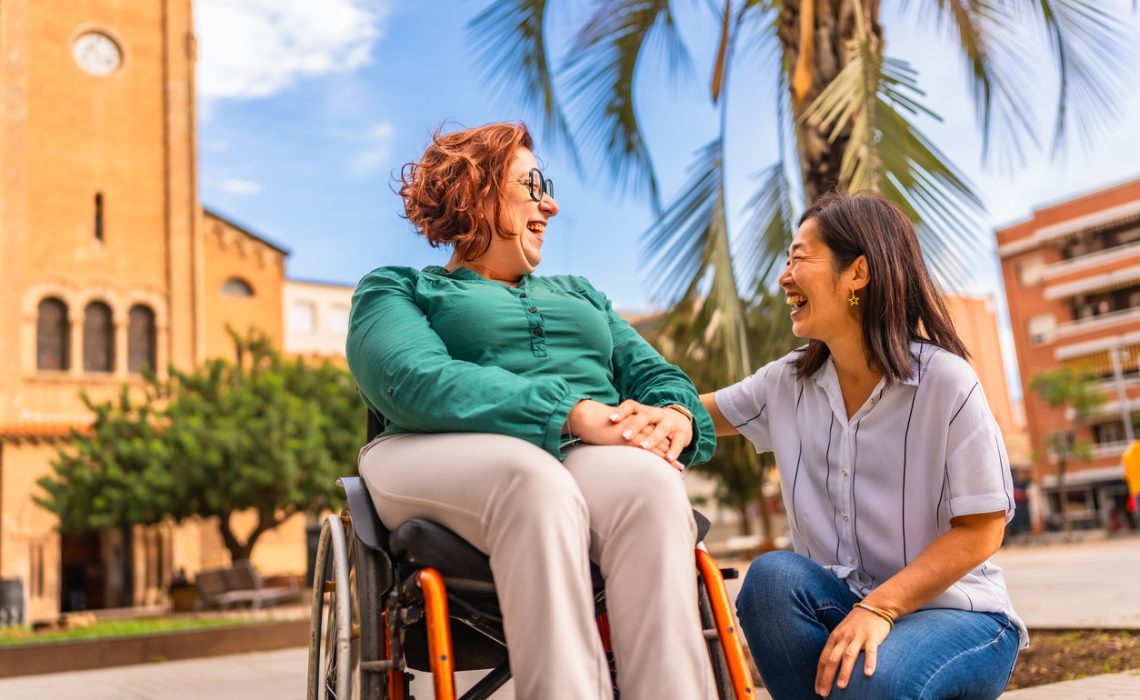
Living with multiple sclerosis (MS) is expensive on every front. Disease-modifying therapies (DMTs), symptomatic medications, physical or occupational therapy, mobility devices, home modifications, and even lost wages can push annual expenses well into five figures. A National MS Society study estimates the average yearly cost of living with MS at $88,487 per person… and that figure keeps rising.
Those numbers are daunting, but they don’t have to dictate your future. There are ways to get financial assistance for multiple sclerosis. From federal benefits and nonprofit grants to community crowdfunding, multiple pathways can lighten the load and be sources of financial help for MS patients.
This guide shows you where to start, how to qualify, and why combining resources (especially a personal fundraiser) can help you get financial relief.
Understanding the Costs of Living with MS
Managing multiple sclerosis means managing expenses that add up fast, often long before insurance or government benefits kick in. From lifesaving drugs to simple day-to-day mobility, here’s where the money usually goes:
- Disease-modifying therapies (DMTs) and other prescriptions: HealthCentral says you can expect $57,000-$93,000 per year even with insurance because most specialty drugs come with steep co-pays and tiered pricing.
Routine monitoring, doctor visits, MRIs, and lab work all add to the economic burden: Outpatient care (doctor visits, imaging, labs) makes up 9% of the average yearly MS cost, or roughly $5,700–$8,000 per patient. - Physical and occupational therapy: According to Therapprove, a typical physical therapy visit runs $75–$150. Occupational therapy sessions average $100-$140, and many people need weekly appointments to stay mobile and independent.
- Mobility aids (wheelchairs, scooters, portable ramps): One-time purchases can range from $500 to $5,000 or more, and repairs or upgrades often aren’t covered.
- Home or vehicle modifications: Remodeling a bathroom for wheelchair access or installing hand controls in a car typically costs $2,000–$20,000+.
Lost wages and reduced work hours: Fatigue, flare-ups, and cognitive changes can sideline careers. Median income loss is roughly $18,000 a year for people with moderate to severe MS.
Add in travel to specialists, childcare during appointments, or the sudden expenses of an unexpected relapse, and it’s clear why no single funding source can cover everything.
A layered strategy (combining grants, government benefits, and an AngeLink fundraiser) offers the most reliable safety net, which will help you get financial assistance for multiple sclerosis.
National & Government Financial Assistance for MS Patients
Federal or state-run support programs can underwrite a significant slice of costs by providing financial help for MS patients. Benefits.gov is a great place to start to screen eligibility quickly, then learn more about the programs below.
Social Security Disability Insurance (SSDI)
- Who qualifies? According to the SSDI, Individuals with sufficient work credits who are unable to perform substantial gainful activity for at least 12 consecutive months because of MS.
- Why it helps: Monthly cash benefits replace lost income and automatically trigger Medicare eligibility after 24 months.
Supplemental Security Income (SSI)
- Who qualifies? Individuals with limited income/resources whose MS prevents full-time work.
- Perk: SSI recipients often qualify for Medicaid immediately, shortening the gap between diagnosis and comprehensive medical coverage.
Medicare & Medicaid
- Medicare (federal) covers many MS drugs, infusion therapies, durable medical equipment, and physical therapy after SSDI kicks in.
- Medicaid (state-administered) may waive or reduce copays and cover long-term services such as in-home aides, depending on your state.
State-Based MS Programs
Several states offer prescription-assistance cards, home-mod grants, or transit vouchers for residents with multiple sclerosis. Check your Department of Health website or call 2-1-1 for a localized benefits screening.
Nonprofits and Grants for Multiple Sclerosis Patients
Below are 4 high-impact organizations that regularly provide financial assistance for multiple sclerosis patients. Always review their eligibility rules (financial level, residency, diagnosis verification) before applying.
1. National MS Society (NMSS)
- What it offers: Short-term grants for rent, utilities, transportation, and urgent home or vehicle adaptations.
- How to apply: Contact an NMSS Navigator or complete the online financial assistance form.
2. MS Focus: Multiple Sclerosis Foundation
- What it offers: Emergency financial assistance for utility shut-off notices, mobility aids, and short-term home-care costs.
- How to apply: Complete the online application and submit physician verification and financial documentation.
3. Patient Access Network (PAN) Foundation
- What it offers: Up to $8,500 annually toward MS copays, deductibles, and insurance premiums to keep critical medications on schedule.
- How to apply: Fill out the PAN Foundation’s grant application form and upload your prescription and insurance statements.
4. HelpHOPELive
- What it offers: 501(c)(3) sponsorship for personal medical fundraisers, matching grants, and administrative support, perfect for bridging gaps that traditional grants can’t fill.
- How to apply: Just fill out the Medical Fundraising Application on the HelpHOPELive site to get started.
Fundraising for MS Expenses: A Personal, Empowering Solution
Crowdfunding has exploded as a complementary (sometimes primary) way to bridge what insurance and grants leave behind, and it’s an effective way of getting financial assistance for multiple sclerosis.
Beyond the dollars, trusted medical fundraising sites can help you:
- Raise money fast. Friends can donate within minutes of launching.
- Rally emotional support. Loved ones see a concrete way to help instead of feeling helpless.
- Maintain agency. You decide how to allocate funds.
We’re excited to introduce you to AngeLink, a woman-led, trust-first platform built specifically for life-changing causes like MS.
Every fundraiser undergoes a pre-launch review for fraud protection, and its Fundraising with Trust pledge reassures donors that their gifts reach the right hands. Some of the best features include:
- Free achievement and donor badges plus seasonal emojis that boost social media reach.
A printable flyer with a unique QR code: perfect for clinic bulletin boards. - Angel Grants: Eligible fundraisers can apply for direct awards from the AngeLink Community Foundation (especially women-owned small businesses or emergency relief).
24/7 Customer Love support: real humans with real answers.
Kick off your AngeLink fundraiser in minutes. Just follow these simple steps and you’ll turn empathy into action before you know it:
- Create your fundraiser in the AngeLink app or on desktop. It takes under five minutes!
- Craft your ask: When you have clarity on how to ask for donations for medical expenses, it gets easier to structure a clear, confident, and emotional-first appeal.
- Write a compelling story: Talk about your MS journey and write a fundraising letter for medical expenses. You can start with templates and adapt them to your own unique situation, current needs, and a clear funding goal. To further expand reach and ensure your fundraiser gets seen, make sure you write a strong fundraiser title for medical expenses.
Add authentic images or supporting content: a few photos or a short video can boost donations by up to 150%. - Share far and wide: To properly raise money for medical expenses, your fundraiser needs to be seen. Get support by posting in WhatsApp groups, Facebook communities, LinkedIn, or your local MS support chapter.
Update your supporters weekly: Provide weekly check-ins to keep momentum and keep the narrative going. People get more encouraged to donate when they see a strong commitment to fight for a good cause. This is one of the best fundraiser sharing tips.
Need proof that an AngeLink fundraiser can snowball into life-changing help? Look at Strength in Unity, a public fundraiser created for Susie Hamilton, a Florida mom and longtime country club employee facing aggressive cancer treatment. In just a few months, her community has rallied over $183,000 all powered by a clear story, regular updates, and AngeLink’s share-friendly badges and QR flyer.
Browse the fundraiser to see how heartfelt copy, authentic photos, and weekly gratitude posts keep donors engaged and the total climbing. This can serve as a great example to learn how to write a fundraising story that connects and reaches its goal.
Where to Start: Creating Your Financial Action Plan
A strong financial game plan turns anxiety into action. Use the steps below to weave government aid, nonprofit grants, community crowdfunding, and expert advice into one streamlined safety net and secure financial help for MS patients.
- Explore federal benefits through Benefits.gov and file for SSDI or SSI if work is no longer possible.
- Contact nonprofit navigators at NMSS, MS Focus, or PAN to stack available grants.
Launch your AngeLink fundraiser to fill remaining gaps such as medical travel, caregiver hours, or cutting-edge therapies.
Consult a financial advisor experienced in chronic illness to optimize insurance plans and tax deductions.
You’re not alone. Support is out there. Combining these resources will help you get financial assistance for multiple sclerosis so you can focus on living fully.
Ready to lighten the load? Launch a fundraiser on AngeLink today and turn community compassion into concrete financial relief.
